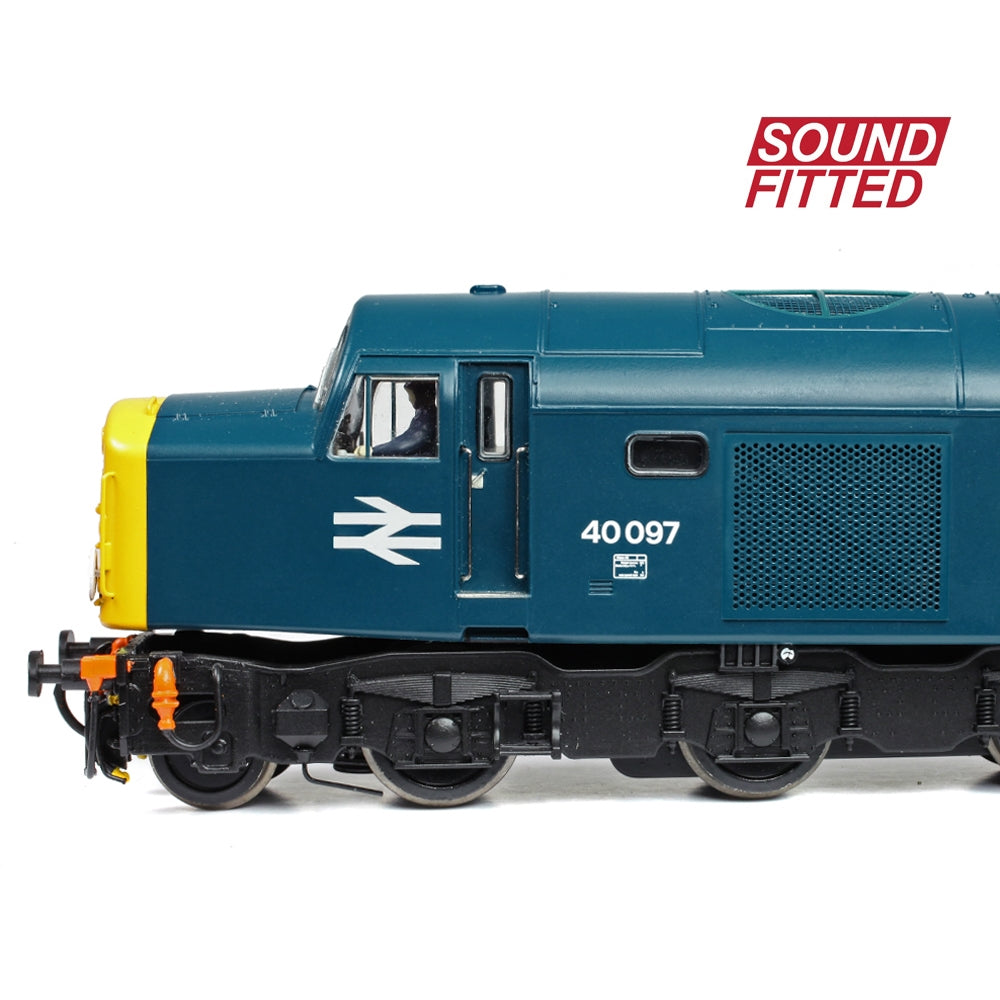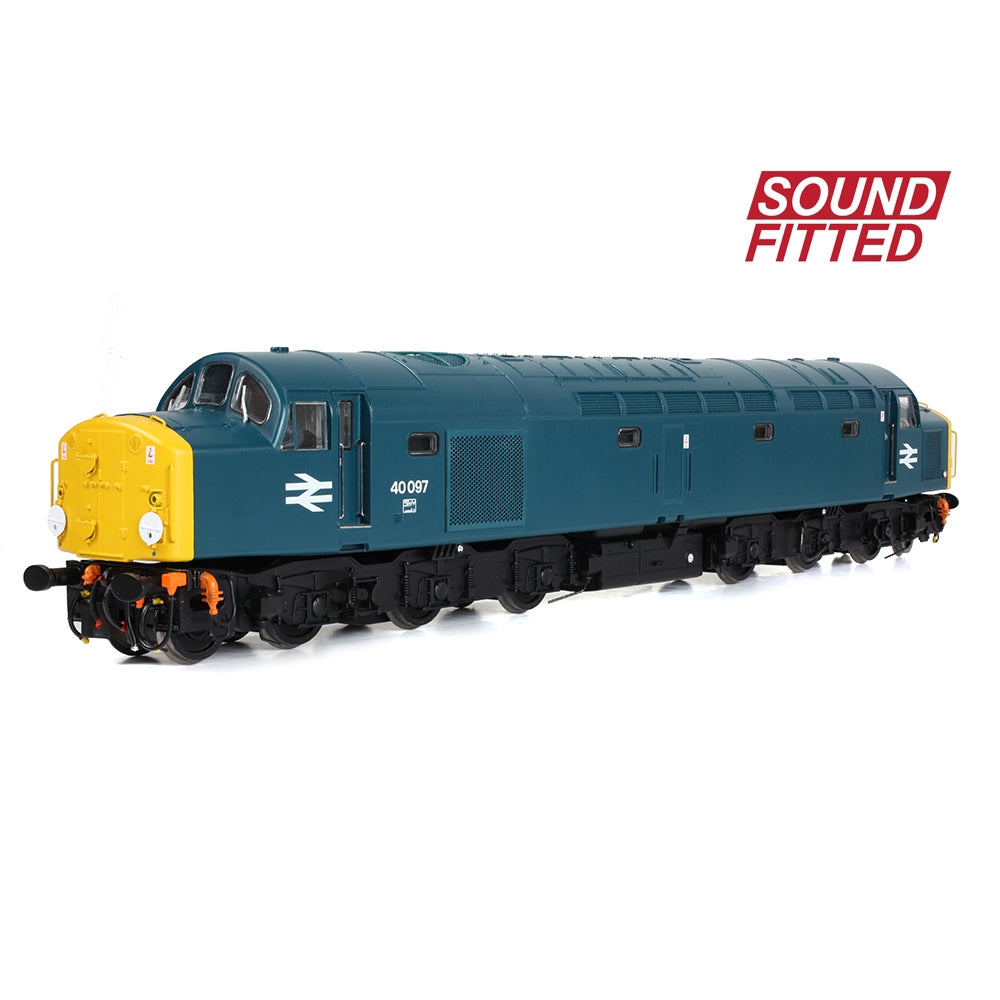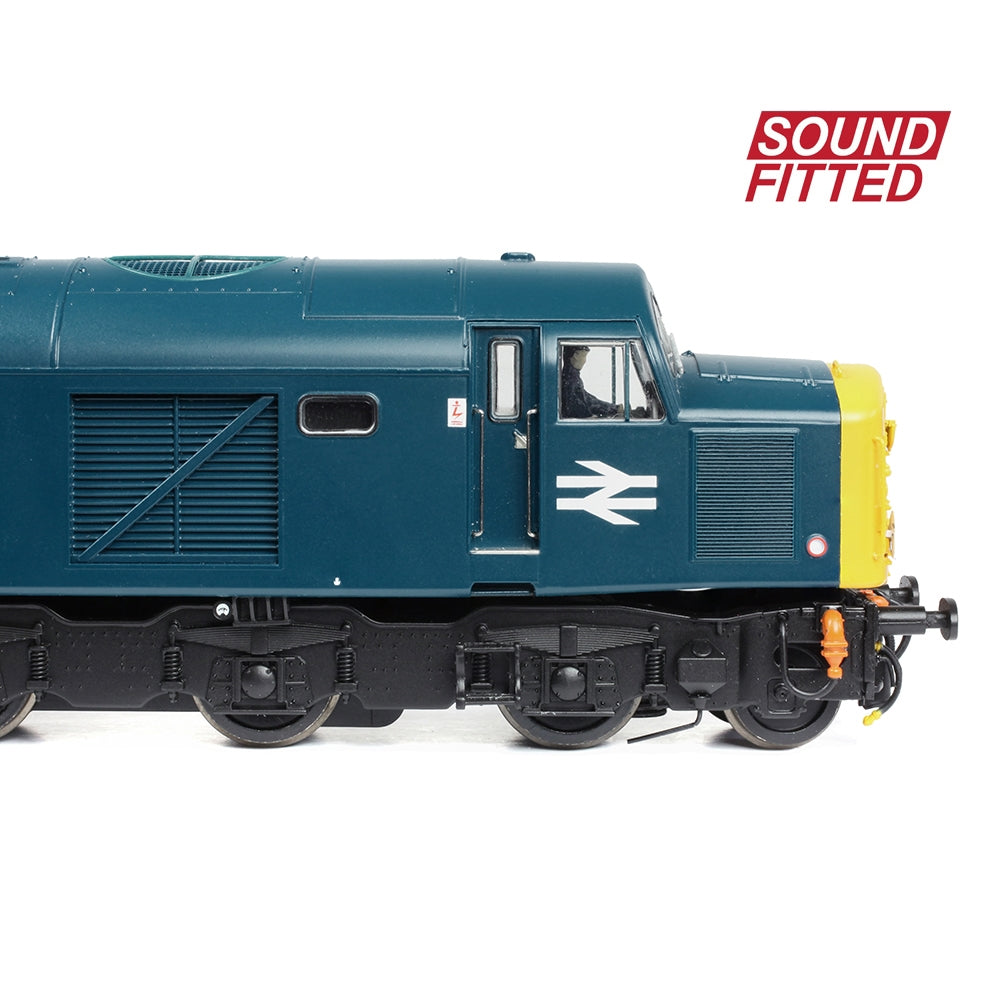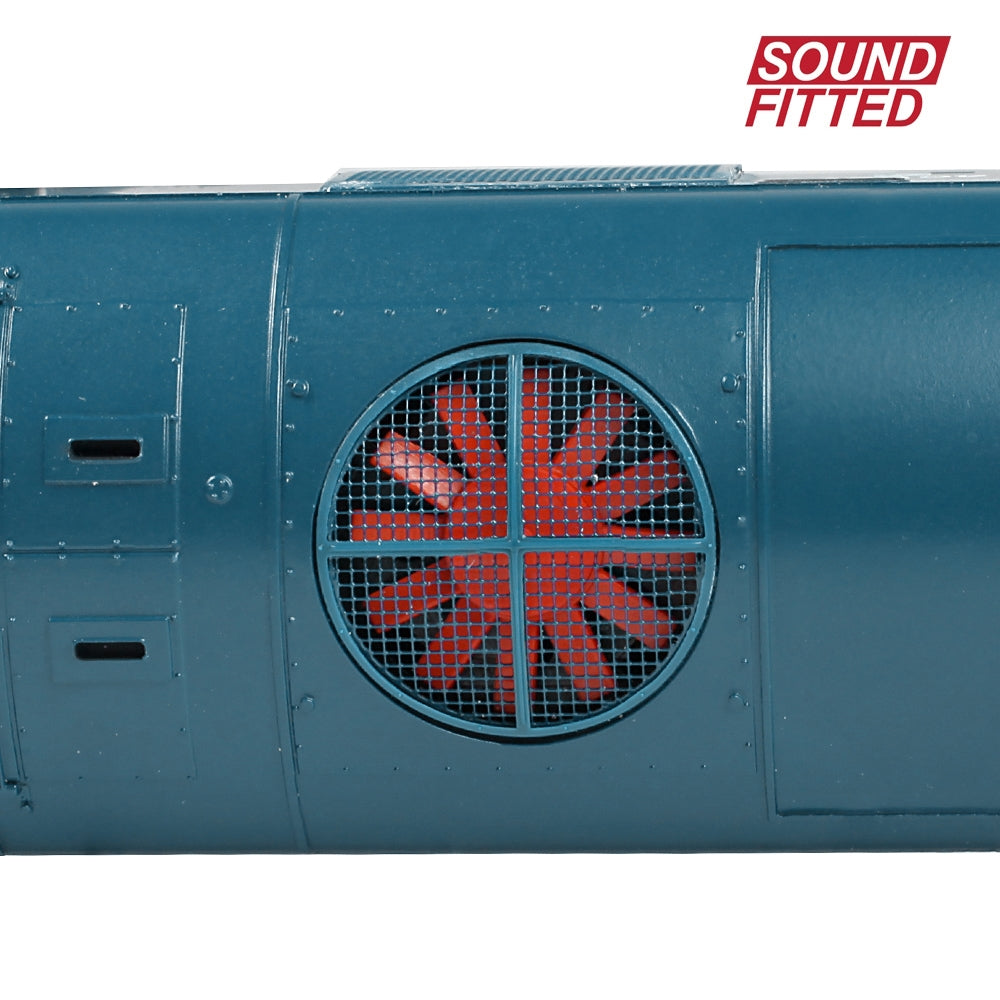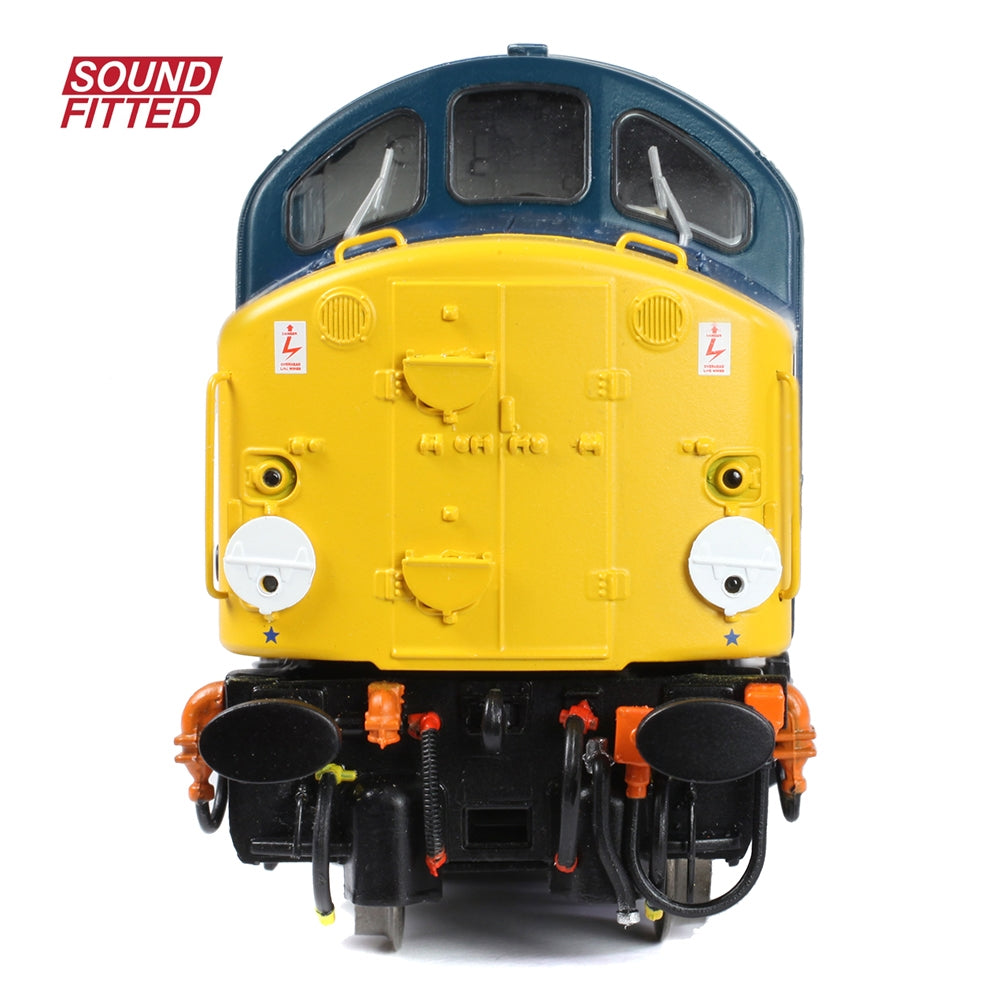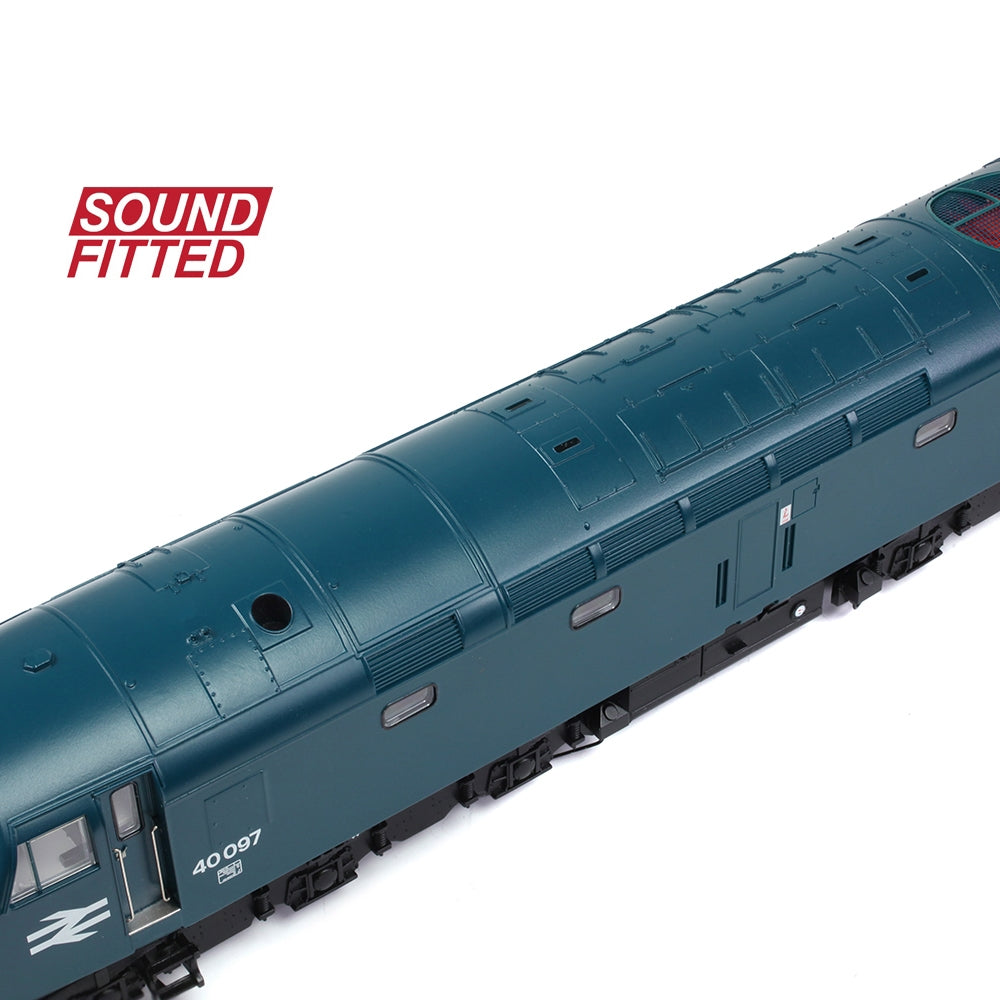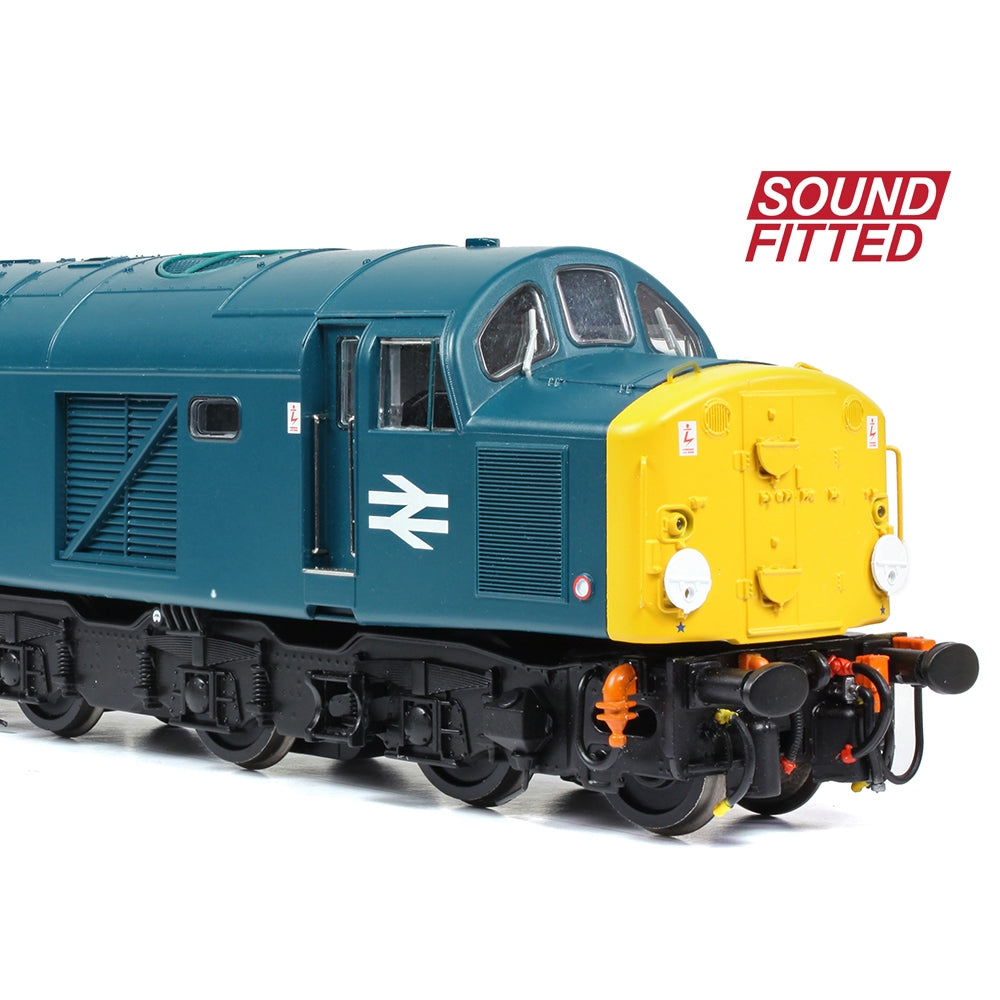BRANCHLINE OO Class 40 Disc Headcode 40097 BR Blue DCC Sound Fitted BRANCHLINE
$ 639,99 $ 192,00
BRANCHLINE OO CLASS 40 DISC HEADCODE 40097 BR BLUE SOUND FITTED
The Class 40 Diesel Locomotive has long been a highlight of the Bachmann Branchline OO scale fleet, and for 2023 this popular model has been upgraded to bring you more features than ever before. Finished in BR Blue livery with Disc Headcodes, we are pleased to present No. 40097 complete with SOUND FITTED.
With the DCC decoder interface upgraded to Plux22; new lighting features and enhanced speaker arrangements have also been employed on the Class 40 to enhance the operating experience – all of which can be enjoyed out of the box with this SOUND FITTED model. On track the model has a mighty presence, just like the real locomotives and, with its five pole, twin flywheel motor powering all six driving wheels, you can be sure of a performance to match too. This Class 40’s good looks are enriched by the superb livery application using true-to-prototype colours, fonts and logos to produce a model fit for any collection.
- Bachmann Branchline OO Scale
- Era 7
- Pristine BR Blue livery
- Running No. 40097
- SOUND FITTED – Fitted with a ESU V5DCC Sound Decoder – See below for the function list
- Length 285mm
DETAIL VARIATIONS SPECIFIC TO THIS MODEL
- Disc Headcodes (Discs supplied in the Accessory Pack)
- Nose-Top Handrails
- Nose-Corner Handrails
- Clayton Boiler Port on Roof (with optional blank supplied in the Accessory Pack)
- Cantrail Grilles Arranged as appropriate to a locomotive with a Clayton Boiler
- Square Boiler Access Panel
- Fitted with Multiple Working Equipment
- Fitted with Dual Brakes (Air Pipes fitted)
- Etched Frost Grilles (optional part supplied in the Accessory Pack)
BACHMANN BRANCHLINE CLASS 40 SPECIFICATION
MECHANISM:
- Five pole, twin shaft motor with two flywheels providing drive to both bogies
- Authentic 1Co-Co1 drive arrangement with six axle drive
- Electrical pickup from all twelve driving wheels
- Separate metal bearings fitted to each driven axle
- Gearing arranged for prototypical running speeds and haulage capabilities
- 16.5mm (OO gauge) wheels to NEM310 & NEM311 standards with authentic profile and detailing
- NEM coupling pockets to NEM362 standards integrated into each bogie
- Designed to operate on curves of second radius (438mm) or greater
DETAILING:
- Bogies fitted with separate steps and sandboxes
- Rotating radiator fan (un-motorised)
- Separately applied metal detail parts, including grab handles, sand pipes and etched fan grilles
- Sprung buffers
- Pre-fitted driver in one cab
- Each model is pre-fitted with a full set of decorated, model-specific buffer beam pipework and accessory parts
LIGHTING:
- Directional lighting, including headlights and high intensity headlights where applicable, switchable on/off at either end on DCC or Analogue control
- Cab lighting*, assigned to two DCC functions for separate switching of each
- Authentic light colours and temperatures selected for each model based on era and application
DCC:
- Plux22 DCC decoder interface
SOUND:
- Two quality speakers employed for optimum sound reproduction, fitted to every model as standard
- ESU Loksound V5DCC Sound Decoder fitted to SOUND FITTED versions
- Sound files produced specifically for the Bachmann Branchline Class 40 using recordings from real locomotives
- SOUND FITTED models operate on DCC and Analogue control as supplied. On Analogue, an authentic engine start up sequence and running sounds are produced when power is applied
LIVERY APPLICATION:
- Authentic liveries applied to all models
- Multiple paint applications employed on each model using BR and corporate specification colours
- Logos, numerals and text added as appropriate using multi-stage tampo printing using authentic typefaces, logos and colours
- In addition, where applicable Etched Nameplates and Plaques are also provided
SOUNDS
F0 – Directional Lights – On/Off (plus Light Switch Sound)
F1 – On – Warm Engine Start / On, Off – Failed Engine Start / On, Off, On – Cold Engine Start
F2 – Brake
F3* – Horn
F4* – Horn
F5 – Heavy Load
F6 – Coasting (Manual notch Down if F22 On)
F7 – Maximum Revs (Manual notch Up if F22 On)
F8** – On – Coupling Up / Off – Uncoupling
F9 – Flange Squeal (Speed Related)
F10 – Fan Noise
F11 – On – Guard’s Whistle / Off – Driver’s Response Horn
F12 – Cab Lights On/Off No. 1 End (plus Light Switch Sound)
F13 – Cab Lights On/Off No. 2 End (plus Light Switch Sound)
F14 – High Intensity Headlight (if fitted, F0 must be ON)
F15 – Auto Uncouple Cycle
F16 – AWS Horn
F17 – AWS Bell
F18 – On – Sound Fades Out / Off – Sound Fades In
F19 – Mute (Latch) / Volume Cycles 6 Levels (Trigger)
F20 – No. 1 End (Fan) Directional Lights Off
F21 – No. 2 End (non-Fan) Directional Lights Off
F22 – Manual Notching Logic On/Off (control with F6 & F7)
F23 – Spirax Valve
F24 – Station Announcement
F25 – On – Driver’s Door Open / Off – Driver’ Door Shut
F26 – Air Dump
F27 – Exhauster
*Alternative Horn sounds and behaviour can be selected via CV changes
** Alternative coupling sounds can be selected via CV changes
Analogue Users: Please note that normal load running sounds and any other automatic or randomised sounds will also operate when this model is used on analogue control (DC) straight from the box!
CLASS 40 HISTORY
The British Rail Class 40 is a British Railways diesel-electric locomotive, rated at 2,000 hp and classified as a Type 4. A total of 200 were built by English Electric between 1958 and 1962 and numbered in the series D200-D399. They were for a time the pride of the British Rail early diesel fleet. Despite their initial success, by the time the last examples were entering service they were already being replaced on some top-link duties by more powerful locomotives. As they were slowly relegated from express passenger uses, the type found work on secondary passenger and freight services where they worked for many years. The final locomotives ended regular service in 1985.
Class 40s operated in all areas of British Railways although Western and Southern Region workings were less common. After the early trials, the majority of Class 40s were based at depots in northern England; notably Longsight, Carlisle Kingmoor, and Wigan Springs Branch on the Midland Region, and Thornaby and Gateshead on the Eastern Region.
The heyday of the Class was in the early 1960s when they hauled top-link expresses on the West Coast Main Line and in East Anglia. However, the arrival of more powerful diesel locomotives, such as Class 47s and Class 55s, together with the electrification of the West Coast Main Line, meant that the fleet was gradually relegated to more mundane duties. In later life, the locomotives were mainly to be found hauling heavy freight and passenger trains in the north of England and Scotland. As additional new rolling stock was introduced, their passenger work decreased, partly due to their lack of electric train heating for newer passenger coaches. They lost their last front-line passenger duties – in Scotland – in 1980, and the last regular use on passenger trains was on the North Wales Coast Line between Holyhead, Crewe and Manchester, along with regular forays across the Pennines on Liverpool to York and Newcastle services.
Throughout the early 1980s Class 40s were common performers on relief, day excursion (adex) and holidaymaker services along with deputising for electric traction, especially on Sundays between Manchester and Birmingham. This resulted in visits to many distant parts of the network. It would be fair to say that few routes in the London Midland and Eastern regions did not see Class 40-worked passenger services from time to time. Regular destinations included the seaside resorts of Scarborough, Skegness and Cleethorpes on the Eastern region, with Blackpool and Stranraer being regularly visited on the West Coast.
Quick Shipping and Professional Packaging
Due to our long-term partnership in a long-standing partnership with UPS, FedEx, DHL and many other leading global carriers, we are able to offer an array of shipping options. Our warehouse staff are highly trained and will pack your products according to our precise and precise specifications. Your items will undergo a thorough inspection and be securely secured prior to being delivered. We ship to thousands clients each day across multiple countries. This is an indication of our dedication to being the biggest online retailer in the world. The warehouses are located in Europe as much as they are in the USA.
Note: Orders that include more than one item are assigned a processing time in accordance with the item.
Prior to shipment before shipping, we'll inspect thoroughly the items you've ordered. The majority of orders are shipped within 48 hrs. The time to deliver varies from 3-7 days.
Returns
We don't manage the stock in our warehouse and factory. Stocks are subject to change at any moment. You may not receive your order after the order has been made.
Our policy is for 30 days. If you have passed 30 days by since your purchase, unfortunately we can't offer you a refund or exchange.
The item cannot be used and in its original condition. It should also be in the original packaging.
Related products
RADIO CONTROL
RADIO CONTROL
(Clearance Item) HB RACING 44mm Heavy Duty Universal Drive Shaft/Rear/Steel/2Pcs HB RACING
RADIO CONTROL
RADIO CONTROL
RADIO CONTROL
RADIO CONTROL
RADIO CONTROL
RADIO CONTROL
RADIO CONTROL

